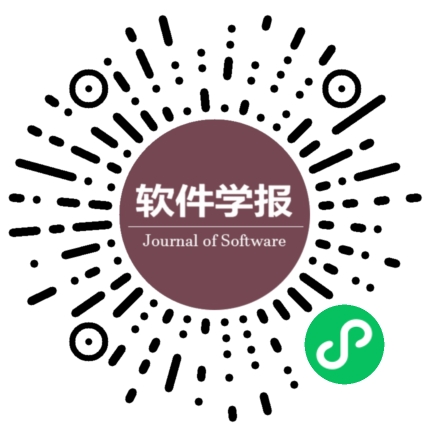基于感染结果的传播网络推断方法
作者:
作者单位:
作者简介:
赛影辉(1983-),女,博士生,主要研究领域为数据挖掘;
侯叶俏(1996-),女,博士生,主要研究领域为数据挖掘;
王明鑫(1995-),女,博士生,主要研究领域为数据挖掘;
李翔翔(1982-),女,高级工程师,主要研究领域为海量遥感数据处理与服务,数据挖掘;
陈畅(1983-),男,博士,讲师,主要研究领域为复杂网络,众包;
孙月明(1992-),女,硕士,主要研究领域为数据挖掘;
雷伯涵(1997-),男,博士生,CCF学生会员,主要研究领域为数据挖掘,自然语言处理;
陈旭(1982-),男,博士,副教授,主要研究领域为海量遥感数据处理与服务,数据挖掘.
通讯作者:
陈旭,E-mail:xuchen@whu.edu.cn
中图分类号:
TP309
基金项目:
民用航天“十三五”技术预先研究项目(B0301);湖北省技术创新专项重大项目(2017AAA125);武汉市应用基础前沿项目(2018010401011288)
Diffusion Network Inference Based on Infection Results
Author:
Affiliation:
Fund Project:
引用本文
赛影辉,王明鑫,陈畅,雷伯涵,侯叶俏,李翔翔,孙月明,陈旭.基于感染结果的传播网络推断方法.软件学报,2022,33(8):3103-3114
复制相关视频
分享
文章指标
- 点击次数:
- 下载次数:
- HTML阅读次数:
历史
- 收稿日期:2019-09-27
- 最后修改日期:2020-09-09
- 录用日期:
- 在线发布日期: 2021-08-02
- 出版日期: 2022-08-06
文章二维码

您是第位访问者
版权所有:中国科学院软件研究所 京ICP备05046678号-3
地址:北京市海淀区中关村南四街4号,邮政编码:100190
电话:010-62562563 传真:010-62562533 Email:jos@iscas.ac.cn
技术支持:北京勤云科技发展有限公司
版权所有:中国科学院软件研究所 京ICP备05046678号-3
地址:北京市海淀区中关村南四街4号,邮政编码:100190
电话:010-62562563 传真:010-62562533 Email:jos@iscas.ac.cn
技术支持:北京勤云科技发展有限公司



